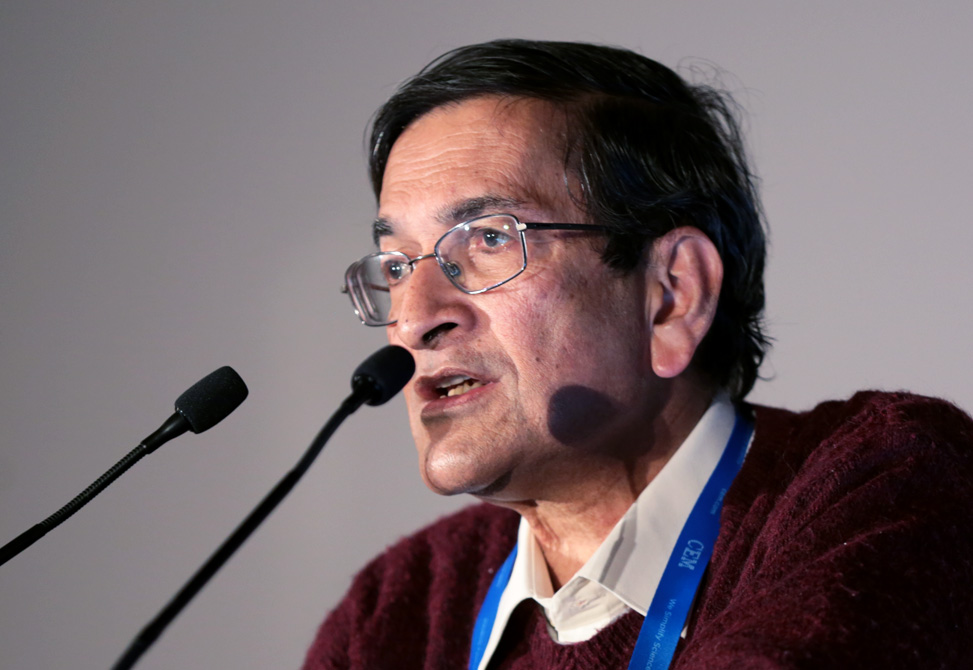Padmanabhan Balaram
Indian Institute of Science
Talk Session: MERRIFIELD AWARD LECTURE
Date: Sunday, June 12, 2022
Talk Time: 03:55 pm - 05:10 pm
Talk Title: Constraining Peptide Conformations: Finding Aib and Beyond
Professor Balaram graduated in Chemistry from Pune University, Pune, 1967, and joined the IIT Kanpur for his Masters in Chemistry, 1969. He earned his Ph.D. from Carnegie-Mellon University, Pittsburgh, 1972, and subsequently did his Post-Doctoral training at the Department of Chemistry at Harvard University. On return to India, he joined the Indian Institute of Science, Bangalore, as a Lecturer, 1973, and then became Assistant Professor, 1977, Associate Professor, 1982, and finally a Professor in 1986. He later became the ector of the Indian Institute of Science.
Balaram has made outstanding contributions towards the understanding of the structure and function of voltage gated transmembrane peptide channels. His major contributions may be classified into three areas: (i) studies on transmembrane peptide channels, (ii) conformational models for peptide folding and (iii) biophysical and chemical studies on membranes and model systems.
He has elucidated the structural chemistry of -aminoisobutyric acid peptides related to alamethicin. He has carried out detailed studies on synthesis, conformational analysis and biological activity of channel peptides and has provided the basis for postulating the helix dipole model for these channels.
Dr Balaram has made valuable contributions in the general area of design and synthesis of model peptides, particularly disulfides. These studies have provided a means for developing bioorganic models for redox proteins containing active disulfide loops. Balaram's contributions in the area of biological membranes and in developing fluorescent probe methodology for examining membrane structure are highly significant. This aspect is exemplified by work establishing regional differentiation of sperm plasma membranes. In his most recent work, he has demonstrated the use of disulfide crosslinking as a means of thermally stabilizing multimeric proteins, using thymidylate synthase as a model.
The report by Mueller and Rudin, 1969, that alamethicin, a cyclic peptide, induces voltage-dependent ion channel formation in artificial lipid bilayers, sparked interest in peptides of fungal origin, rich in alpha aminioisobutyric acid, Aib, 2-methylalanine. The structure of alamethicin was corrected in 1976 to reveal an acyclic sequence, rich in Aib, blocked at both N and C-termini. An endeavour to produce alamethicin by chemical synthesis, soon unveiled the unusual and attractive properties of peptides containing Aib.
The alamethicin N-terminal tetrapeptide was quickly reached by solution phase chemistry. Surprisingly, crystals appeared almost instantly after purification. Diffraction photographs, then painstakingly measured, seemed promising enough to move even further forward towards structure determination. Direct methods of phase determination, still in their infancy, revealed a folded structure with two internal 10-atom CO—HN hydrogen bonds, launching the peptide 310-helix on its way.
The backbone conformational constraints imposed by Cα alkylation provided an easy route to helix design and to restrict conformational excursions in biologically active peptides. The growing understanding of polypeptide chain folding in proteins suggested that D-Pro induced prime turns would nucleate β-hairpins in designed peptides. Attempts to probe helix stability by insertion of the backbone expanded β and γ residues uncovered the wealth of hydrogen bonded folded structures in hybrid sequences, even as the field of β and γ peptides was established by Seebach and Gellman. This lecture traces the journey taken at Bangalore from the mid-1970s on promoting the use of non-canonical amino acids in peptide design.







